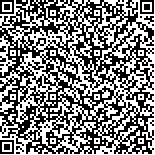Archive > Volume 47 Issue 9 > 2021,47(9):1113-1121. DOI:10.7519/j.issn.1000-0526.2021.09.007 Prev Next
Data Sequence Correction of Icing Weather Phenomena Based on Bayes Discriminant Method
- Article
- Figures
- Metrics
- Preview PDF
- Reference
- Related
- Cited by
- Materials
Abstract:
Using the methods of element consistency, internal consistency and spatial consistency, the data qualities of 81 national surface meteorological stations in Anhui Province from 1961 to 2018 are controlled. The Bayes discriminant model is trained based on the normal year data after quality control, and the icing data of abnormal year are corrected by the model. The results show that total 84 years’ annual icing days from 38 stations in Anhui Province are abnormal, mainly concentrated in 1961-1970, 1988-1999 and 2015-2017, and fail to pass the quality control. The main reasons for these phenomena are the simplification of historical observation tasks of some stations, the adjustment of meteorological station classification, the reform of ground meteorological observation operation and so on. Then, by using the Bayes discriminant method, several discrimination models of icing weather phenomena are constructed. After verification, it is found that Model 1 and Model 3 have higher recognition accuracy, hit rate and TS score but lower false alarm rate. Considering the simplicity of calculation, Model 1 is selected to correct the icing data of abnormal years day by day. In addition, through the comparison of the icing weather phenomena correction results of Lu’an, Taihe and Wuwei Stations in abnormal years, we find that the model based on Bayes discriminant method is more reasonable for the correction of the icing weather phenomena caused by different reasons in different time periods, and the variation trend of annual icing days after correction is more in line with the actual situation, which shows that the Bayes discrimination model is reasonable and feasible to correct the icing weather phenomena.
Keywords:
Project Supported:
Clc Number:


Mobile website









